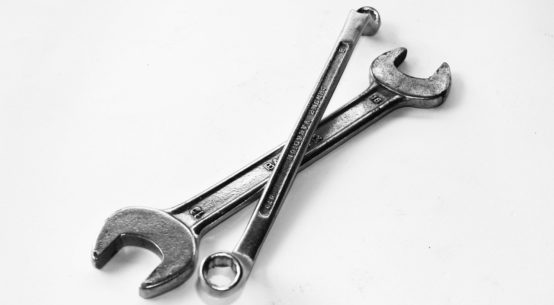
Understanding the basics of your machine will help keep your machine in good running order, help keep you on the ATV, and provide you with an overall better riding experience. Let’s start with the basics of the ATV and move on from there.
Most machines have an owner’s manual hidden somewhere in their chassis. This information is not intended as a replacement for reading the owner’s manual. But just in case you don’t have one. Here are a few things to consider.
Type of Fuel
Most ATVs will run fine on plain old regular gas. Low to medium octane is just fine If you have a two stroke engine you may need to add oil to the gas, or add oil to the oil injector reservoir. Four stroke engines do not require oil in the gas, but they will require oil in the crank case. Some people will suggest using high octane Premium grade gas in their ATVs. If the manufacturer does not specifically recommend this grade, do not use it. Premium grade tends to burn hotter and may damage your engine.
Check the Oil Level
ATVs have a variety of systems for checking the oil. Some have windows that show the level of oil in the crankcase. Some have dip sticks. Some ATVs, like Honda’s for example, have the transverse mounted engine and will have an oil checking dip stick on one side and an oil adding port on the other side. Unless your manufacturer specifies otherwise, most machines will require 10-30 weight oil. Keep a quart handy. You may not burn oil, but I discovered that if you turn your machine over, inadvertently, you can lose your crank case oil out of the manual recoil starter, when your machine is inverted. If you should change the oil, be sure you change or clean the oil filter too.
Spark Plug
Every machine comes with a spark plug installed. None of them come with a spare. As soon as you purchase a machine, purchase a spare spark plug and put it in the jockey box / storage compartment. It may save your bacon on a long and lonely trail some day.
Tire Repair
ATVs don’t have inner tubes. They are low pressure tires. The terrain you travel on is strewn with hazards that can pop and puncture your tires. There are two things you can do to save you a long walk. Pick up a plug patch kit from a local automotive store. It will come with a tool that looks a lot like a crochet needle on a screwdriver handle. The kit will also contain strips of rubber and some rubber cement. When you find that you have a puncture you can push a strip of rubber covered with glue into the hole then remove the tool. You trim off the excess rubber on the outside and your hole is repaired. The next thing you need to do is pump up your tire again. You can carry a 12-volt air compressor, or you can carry a can of “Fix a Flat”. Either will work just fine. The fix a flat is cheaper.
Accessories
Your ATV is built to carry loads. What ever load you carry you need to be sure that the weight is distributed as evenly as possible so that you don’t increase the possibility of a roll over. Manufacturers will disclaim all liability for any injuries and damages done if you attach any accessory to your machine. Who can blame them, even if they make and sell accessories, there are so many different options it would be impossible to guarantee performance and safety with so many different combinations possible.
Fuel Gauge
Newer and more expensive older models will have a fuel gage on or near the top of the gas reservoir tank. Models without a fuel gage may be checked by removing the gas cap and conducting a visual inspection in the tank. You should always start a ride with a full tank of gas. You will be amazed how quickly you will go through gas, especially if you are running a 2 cycle engine because these machines fire each time the piston comes to the top of the chamber. There are some after-market gas caps that can be purchased that indicate the fuel level in the tank. These are not always a suitable and accurate solution because they tend to use a float device that often becomes damaged or stuck.
Fuel Valve or Stop Cock
Located on the left side of your machine just below the fuel tank you will notice a small manual switching lever that permits you to turn off and on the gas. Most ATVs also have a reserve position that permits you to drain the last drop of gas from your tank. It is a good idea to have the gas turned off when you are not operating your ATV. This will keep the gas from building up plaque or resin in your carburetor and tubing. You should also have the gas turned off when transporting your ATV. This will help to minimize the potential damage in the event of an accident. Just get in the habit of turning off your fuel when not in use and you will be safe. Honda’s latest models have an excellent fuel valve that is easily accessible.
Choke
All ATVs will have a choke that can be used to increase the flow of gas into the carburetor. This is particularly helpful in colder weather or when your fuel valve has been off for a while. The choke is usually located near the carburetor on the left side of your ATV. Some manufacturers have extended the choke control up to the top of the machine near the speedometer. Nice touch. You don’t even have to remove your gloves to choke the machine.
Once you pull your choke on you will need to close the choke after your machine starts and warms up a bit. If you don’t close the choke you will run rich and your machine may flood out and die as a result of the choke being open. If your ATV seems listless and strangely lacking power, check the choke to see if it is still pulled out.
Gear Shift Pattern
In the old days there were so many variations on where the gears were in between the various OHV’s that it was a real trick to get off one machine and get on another without some orientation to the gear pattern. Nowadays there is much greater uniformity to the gear pattern for machines. Neutral will always be below first gear. With some machines, Reverse will be below Neutral. Others will have a special lever to engage Reverse, but you must be in a forward gear to do so. This is true of the Yamaha Bear Tracker, for example. The higher gears are usually positioned above first gear. Each time you reach the maximum rpm for the engine simply let off the gas and change the gear, by pulling up with your foot, in the case of a foot mounted gear changer, or press the up arrow button for the electronic shift featured machines. If you fail to let up on the gas you may find your machine will jump when you move to the next gear. This is not gracious, or stylish, and will be bad for your transmission. When down shifting you must also let up on the gas throttle, and press down to move to the lower gears. This would be necessary when climbing hills or slowing to a stop.
Many machines will not start unless they are in Neutral. Most machines have a neutral indicator light that will illuminate when the machine is in Neutral. Yamaha has a feature that permits starting if the motor is in any gear as long as the brake is fully engaged.
Starting the Engine
There are generally five things that are required in order to start an ATV: 1. The gear must be set to Neutral. 2. The ignition key must be switched to the On position; 3. The kill switch must be set to the “Run” position, 4. The gas petcock must be turned to the Open position (or reserve) and; 5. You must press the ignition switch button, or pull the manual recoil starter rope. You may run your starter motor until the battery dies and not get your machine to start if you don’t have the kill switch in the “Run” position. Many a battery has run down from this very oversight. Some machines also require that you have the brake fully engaged before the machine will turn over.
It is always a good idea to encourage the engine a bit by pumping the gas throttle once or twice before or during the ignition process. If it doesn’t start, pull out the choke and try it again. If it still doesn’t start, check the gas, check the air filter, check the oil, and check the spark plug. Without proper air, fuel, and spark no engine will start.
Honda hides their recoil starter for the sake of style. If you have a Honda without a visible recoil starter, you may wish to locate the item before you start riding. It may be a handy feature to know about.
Tire Pressure
ATVs use low pressure tires. The tire pressure appropriate for each tire will be engraved on each tire. It is best to operate your machine within the specifications set forth on the tire. You may choose to lower the tire pressure when using your machine on sand or on snow. The lower pressure will tend to increase your traction and grip on the ground or snow when the conditions seem to merit the modification. The lower tire pressure will place greater area of the tire on the snow or sand.
Low pressure tires driven on hard packed or paved surfaces represent a serious danger. Do not ride ATVs with low pressure tires on a hard packed or paved surface. This may result in serious injury including death.
Regular Maintenance
No machine can be left indefinitely without maintenance to preserve its function. ATVs are of necessity, pretty sturdy machines, but even they will require that you change the oil and clean or replace the oil and air filters on a regular basis. During any riding season you should perform this maintenance at least twice. Manufacturers will recommend that you do it every couple hundred hours of use. You can change or clean the air filter even more frequently, especially if you have been on a very dusty trail.
Manufacturers Warnings
Your machine will typically have several manufacturer warnings permanently attached to the machine. They do this because they have suffered many losses from people who disregarded the information in the user’s manual and performed foolish acts unsuccessfully. According to Honda, “Stupid Hurts.”
Please review and follow all stated manufacturer warnings.
Operators Controls
This may sound foolishly basic; but, for those who may be starting at ground level here it is any way.
You steer the ATV left and right with the handle bars located at the front of the machine. Once the engine is started and the ATV is in a forward gear you speed up by pressing the gas throttle, usually located on the front right handlebar. You can slow down the ATV by pulling on the brake handle. It is a good idea to simultaneously gear down the ATV while slowing down with the brakes. The lower the gear, the slower the speed you will be able to go. Most ATVs have a foot brake and one or two hand brakes on the handlebars. The left brake lever on older model ATVs may be a parking brake only. Pulling this lever would lock the brake on. Most newer models have two hand brakes and the foot brake. The foot brake controls the rear tires and the right front brake controls the front tires. The left front brake controls both the front and rear tires (on many newer models).
Keep both hands and feet on the controls at all times. Rough and unpredictable terrain can require full attention and physical capability to control a machine safely.
Be sure to enroll in and participate in the rider training offered for adults and children. Call 1800 OHV Ride to schedule a training class.
Keep in mind that you must research legal places to ride and be properly clothed and protected before actually using your ATV
Environmental protection is also an important aspect of riding your ATV.




